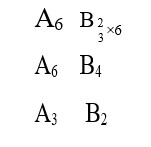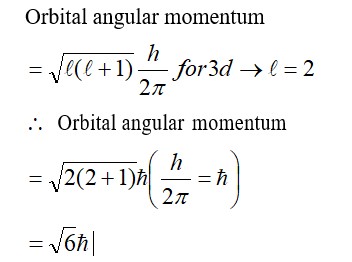For a dimerization reaction, 2A(g) → A₂(g), at 298 K, ∆Uᶱ = -20 kJmol⁻¹, ∆Sᶱ = -30 JK⁻¹mol⁻¹, then the ∆Gᶱ will be J.
For a dimerization reaction, 2A(g) → A₂(g), at 298 K, ∆Uᶱ = -20 kJmol⁻¹, ∆Sᶱ = -30 JK⁻¹mol⁻¹, then the ∆Gᶱ will be J.
-
1 Answer
-
13.49
2 A (g) → A? (g)
Δn_g = 1 - 2
Δn_g = 1
ΔH = ΔU + Δn_gRT
ΔH = -20 × 10³ + (-1)8.31 × 298
ΔH = -22477.572 J mol? ¹
ΔG = ΔH - TΔS
ΔG = -22477.572 - (-30)298 = -22477.572 + 8940
ΔG = -13537.57 J mol? ¹
Similar Questions for you
Kindly go through the solution
(1) [Ni (NH3)6]+2 → Ni+2 → d8, C. No. = 6,
SP3d2, Para
(2) [Co (H2O)6]+2 → Co+2 → d6, C. No. = 6
d2sp3, Dia
(3) [Ti (H2O)6]+3 → Ti+3 → d1, C. No. = 6
d2SP3, Para
(4) [Co (NH3)6]+3 → Co+3 → d5, C. No. = 6
d2sp3, Para
Taking an Exam? Selecting a College?
Get authentic answers from experts, students and alumni that you won't find anywhere else
Sign Up on ShikshaOn Shiksha, get access to
- 65k Colleges
- 1.2k Exams
- 679k Reviews
- 1800k Answers



